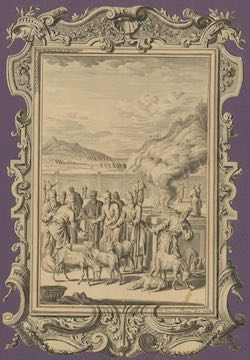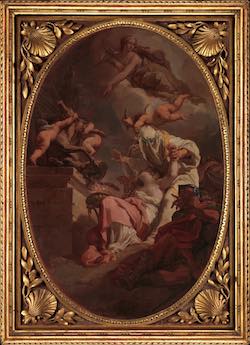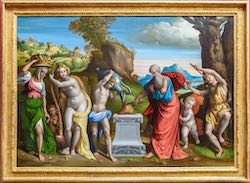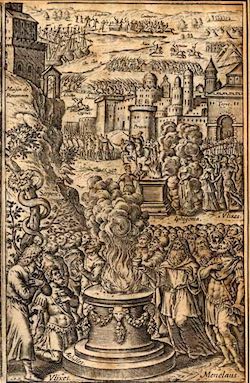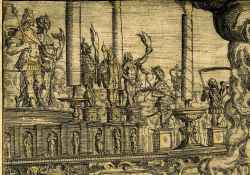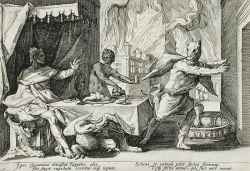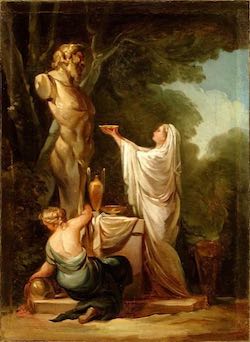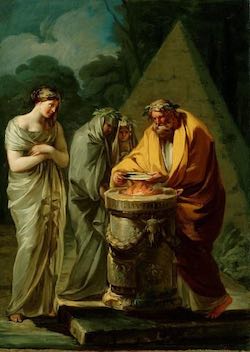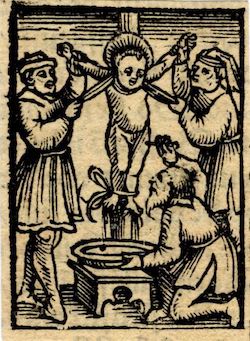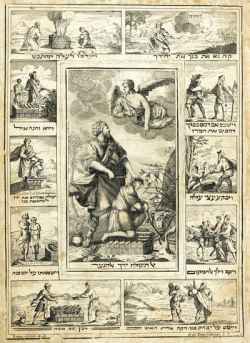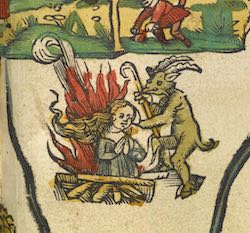Topic: 2. Sacrifice and religion: Comparisons, Antiquarians, Anthropology (16th-18th Century)
Religious sacrifices across various cultures and contexts sparked widespread interest in Early Modern Europe. As Christianity expanded into regions inhabited by "infidels" and "pagans", Europeans encountered a diverse array of sacrificial customs, ranging from the Sati rituals in India to the Aztec sacrifices in the Americas. This cross-cultural exposure captivated a wide audience, including theologians, philosophers, political thinkers, antiquarians, orientalists, missionaries, poets, artists, and even the general public. These encounters broadened the European understanding of sacrifice and led to a critical reassessment of classical and biblical sacrificial rites. This section includes:
- Sources: A selection of early modern printed materials, which include descriptions of the Americas, Asia, and Africa, alongside antiquarian and philological studies on religious sacrifice in classical antiquity and beyond. It also presents early modern works of ethnological observations and the first attempts to compare different sacrificial practices in various traditions and contexts, laying the groundwork for disciplines like the history of religions and anthropology.
- Iconographic Representations: A rich collection of images from the 16th to 18th centuries, illustrating a range of sacrificial rituals and practices as seen in different cultural and geographical contexts.
- Related Bibliography: An extensive bibliography spanning scholarly works from the 19th to 21st centuries, providing contemporary analyses and interpretations of these early studies and observations.
Verwerfliche Opfer (1731)
from: Scheuchzer, Johann Jakob, Physica Sacra (Kupfer-Bibel), Augsburg and Ulm, Christian Ulrich Wagner, 1731-1735, vol. 2, p. 500, plate 282 (ZB III ZZ 55)Illustriert Lev 22,22-24
Zürich, ZB, Graphische Sammlung, Füssli J.M. Phys. Sac. ZEI 93 / emanuscripta
The Sacrifice of Iphigenia (1789)
Palazzo Gnudi Scagliarini, Bologna
A Pagan Sacrifice (1526)
National Gallery, London
An Irish ritual of kingship: the sacrifice of a white mare and preparation of a stew, in which the king bathes and which his supporters ea (ca 1196-1223)
British Library, London [ms Royal 13 B. VIII, fol. 28v]
The Sacrifice of Isaac (1562)
from: Project on engraved sources of Spanish colonial art
Sotocoro, Temple of the Franciscan Ex-Convent of La Asunción de Nuestra Señora, Tecamachalco, Puebla, Mexico
Ancient Sacrifice and Head of a Satyr (?th Century)
National Gallery of Art, Washington
The Sacrifice of Iphigenia (15-16th)
from: Italy
Harvard Art Museums/Fogg Museum, Gift of Richard Wheatland Object Number 1943.1841
Saxons worshipping their gods; the deities on a temple structure on l, priests dressed as bishops on r, smoke rising from sacrifices at centre. (1597)
from: Illustration to Peter Albinus, 'Außzug der Eltisten und fürnembsten Historien des uralten streitbarn und beruffenen Volcks der Sachssen ...', (Dresden) 1597. 1597 Hand-coloured etching and letterpress
The British Museum, London
Lycaon Transformed into a Wolf (1589)
from: Metamorphoses by Ovid, book 1, plate 9
Los Angeles County Museum of Art
Sacrifice to Pan (1771)
Colección particular, Zaragoza (Spain)
Sacrifice to Vesta (1771)
Colección Félix Palacios Remondo, Zaragoza (Spain)
The martyrdom of Simon of Trent; a small child tied to a pole with two men cutting his skin while another holds a bowl underneath the boy's feet to collect the blood; illustration to Jacobus de Voragine, 'Passionael efte dat levent der hyllighten', Basel: Adam Petri, 1517. (1517)
from: Jacobus de Voragine, Passionael efte dat levent der hyllighten', Basel, Adam Petri, 1517
British Museum
The Wicker Man of the Druids Crop (18th Century)
from: Pennant, Thomas. A Tour in Wales, London, H.D. Symonds, 1781
The Sacrifice of Isaac (frontispiece with eleven biblical miniatures centering around the Sacrifice of Isaac) (1739)
from: BIBLE, Hebrew. Arba'ah ve-Esrim [Complete Hebrew Bible with Italian glosses and with engravings by Francesco Griselini]. Venice: Bragadini for Isaac Foa, 1739.
Braginsky Collection (Zürich & Amsterdam)
Depiction of a satī on a map. A horned figure standing by a woman burning on a pyre (1522)
from: Claudii Ptolemaei... [Maps.C.1.d.11]
British Library, London
A Topac Amaro le Cortan la Caveza en el Cuzco (1615)
from: Guamán Poma de Ayala, F. Primer nueva corónica y buen gobierno [1616]. Manuscript conserved in the København, Det Kongelige Bibliotek [ Royal Library, Copenhagen, Denmark ], GKS 2232 4°.
Atahualpa es encarcelado (1615)
from: Guamán Poma de Ayala, F. Primer nueva corónica y buen gobierno [1616]. Manuscript conserved in the København, Det Kongelige Bibliotek [ Royal Library, Copenhagen, Denmark ], GKS 2232 4°.

